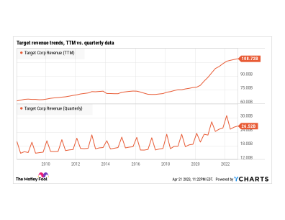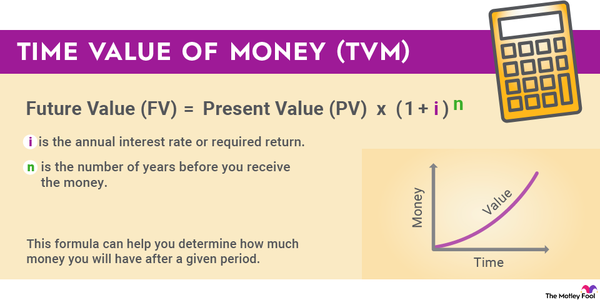Trailing 12 months (TTM) is a common term referring to a way to measure the performance of a company over time. It is also used to calculate financial ratios, such as the price-to-earnings (P/E) ratio and return on equity (ROE).
But what does TTM actually mean? And how can you use it to make better financial decisions?

What is TTM?
What is TTM?
TTM is a financial term that stands for "trailing 12 months".
It refers to the past 12 consecutive months of a company's financial performance. You calculate TTM figures with data from a company's quarterly reports, either taken directly from those reports or as reported by your favorite font of financial information. The current TTM data at any time is the sum of the four latest reports of revenue, earnings, and other metrics. You can also shift to a set of four consecutive reporting periods to analyze how the TTM value has changed over time.
Why is TTM important?
Why is TTM important?
So why do we care about TTM? It can give us a sense of how a company is performing over time. For instance, if a company has positive TTM earnings, that indicates that the company's after-tax income is greater than its operating expenses, resulting in a net profit over a yearlong accounting period. If a company’s TTM figures are negative, the company is spending more money than it’s making. Considering TTM values instead of a single quarter smooths out seasonal effects and gives less weight to unique, one-time items.
The longer-term view of a company’s performance often carries more weight than sudden changes in a single report. Let's say a company has a great quarter, but its stock price doesn't go up. That could happen because the company's TTM figures are still negative, even though it had a good quarter. Investors will be more likely to buy the stock if they know the company's TTM figures are positive. The company is stuck in a "show-me" pattern, where analysts and investors are more interested in seeing improving long-term trends than in seeing the ins-and-outs of any particular quarter.
TTM can also be used to compare the performances of different companies. Imagine we’re looking at two companies, Acme and Beta. Acme’s free cash flows (FCFs) over the last four quarters are positive, while Beta’s TTM FCF results are negative. This means that Acme made more cash than it spent over the past four quarters, while Beta consumed cash over the last fiscal year.
You still have to take care not to make direct comparisons between apples and oranges -- a 5% net profit margin may be awesome for a retailer but terrible for a developer of enterprise software -- but TTM values make it easier to compare the results of two companies.
Using the data
What can you do with TTM data?
Now you know what TTM means and how the metric is used. But what can you do with this information? Here are a few ideas:
- If you're looking to invest in a company, TTM data helps you compare the financial performance of two companies. You could compare their revenue growth or profit margin trends over the past 12 months.
- If you’ve already invested in a company, you can use TTM data to track its progress and build a long-term overview of a company's revenue growth or changes in its bottom-line profits from one year to the next.
- You can use TTM data to identify trends in a company's financial performance. You can see if a company's revenue has been growing steadily or if its profits have been declining, among many other things.
- TTM data can be used to make financial projections for a company. For example, you can estimate how much revenue a company will generate in the next year or how much profit it will make. The analysis can apply expected growth rates to the company’s current TTM results.
- Finally, TTM values are incredibly useful in visual presentations of financial data. Suppose you’re looking at big-box retailer Target (TGT -0.09%). The company generally posts large revenues in the fourth quarter. The steady pulse of holiday increases hides what's going on in the rest of the year. But if you roll Target’s sales up into trailing-12-month totals instead, the ongoing revenue trend pops out immediately:

Example
An example of TTM in the real world
Let's take a look at two familiar names: retail titan Target and tobacco giant Altria (MO -0.26%). Here's how their TTM revenue developed over the six quarters between early 2021 and late 2022, measured in billions of dollars:
| Company | Q2 2021 | Q3 2021 | Q4 2021 | Q1 2022 | Q2 2022 | Q3 2022 |
|---|---|---|---|---|---|---|
| Target | $100.3 | $103.4 | $106.1 | $107.1 | $107.9 | $108.7 |
| Altria | $26.4 | $26.1 | $26.0 | $25.9 | $25.5 | $25.2 |
As you can see, Target’s revenue rose steadily in this period, while Altria’s top-line sales declined. This view smooths out any short-term fluctuations in revenue that might be caused by seasonal factors or one-time items. With TTM figures, we can get a more accurate picture of a company's ability to perform over a longer period, across various market conditions and economic environments.
This is especially useful for comparing two companies in different industries. For example, a company in the retail industry might see a lot of seasonal effects in its revenue development, while a company in the tobacco industry might not. Target’s single-quarter sales are frequently larger in the holiday-flavored fourth quarter, while Altria customers don’t tend to change their buying habits very often.
By looking at TTM data, we can avoid comparing Target’s seasonal apples to Altria’s steady oranges and instead compare the companies’ long-term performance trends on equal terms.









































